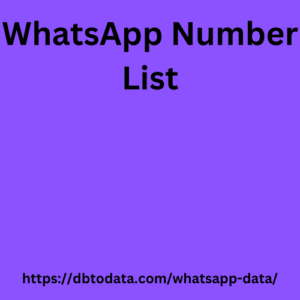The two exist on a spectrum, and it’s up to you to figure out where on that spectrum your strategy will fall, as well as which of the two sides it will skew closer toward. What should a good data strategy include? Now that we’ve covered the basics of data strategies, let’s talk about what your data strategy should include. It’s hard to get into specifics since every strategy looks different, but here are three broad types of info your strategy should help you plan for. 1. Who manages your data The first thing your data strategy should include is who on your team will handle data and what their role will be.
Who’s responsible for: Gathering data? Sorting it
Reviewing it? Analyzing it? You can also ask yourself questions like: How will your different teams interact with your data and each other? Which teams will be responsible for Taiwan WhatsApp Number Data which types of data? Which other teams will they share that data with? Answering those questions will help you streamline your data process, eliminating any confusion about who has which responsibilities and what’s expected of everyone when it comes to data management. 2. Tools for managing your data Another vital element of any data strategy is tools and technology. You probably don’t want to handle all your data with your bare hands, from data extraction to data transformation — you’ll want help from some digital data tools or your data stack.
Of course, the question is, which tools will you use
That’s something your data analytics strategy should answer. For example, you may want to use a customer relationship management (CRM) platform to gather and store Taiwan Whatsapp Number List your customer data. Or maybe you plan to bypass a CRM and simply use an enterprise resource platform (ERP) for all data across your whole company. Whatever tools you plan to use for data collection, categorization, and analysis, your strategy should include that information. 3. How you use your data Finally, your data strategy should cover how you intend to use your data. What will your process be for analyzing it? How will you analyze different types of data? What insights will you be looking for in that data? Answering analytics process significantly.


